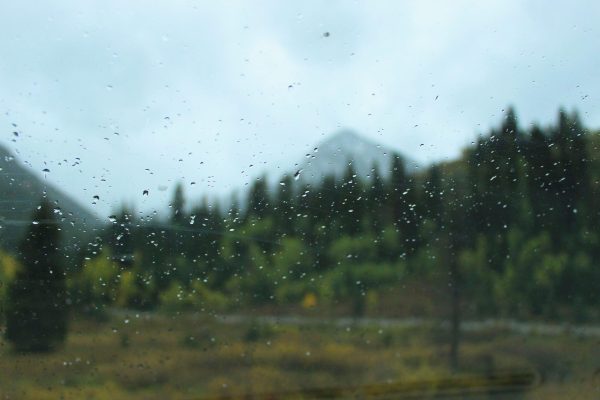When the Crow Flies… or Raven
This past June I spent over a week in Centennial Valley, Montana. Almost every morning my group and I got up with the sun and headed out to bird-watch. One morning we went to a campsite farther along the valley. The stretch of area, still covered with dewy mist, was between Upper Red Rock Lake and Sheep Mountain, surrounded by aspens and furs on all sides. There, I saw two massive black birds, perched and bent over, at the very top of a tree.
I had no idea what the birds were. I’d never seen birds quite that big – too big to be anything but an inked-over raptor. When I finally did ask our guide, they explained that the birds were ravens.
Although many people use the terms “crow” and “raven” interchangeably, the two species are actually very different. Over the summer, I had come to appreciate birdwatching and being able to study the differences between birds. So now, I set out to understand those differences that distinguish ravens and crows. I bought The Sibley Field Guide to Birds of Western North America the minute I could and planned to apply everything I had learned about birdwatching to some of the hardest birds to identify.
First, the crows. Crows are universal and widespread. You can see them any time of the year in any open habitat – including suburbs – across the U.S. They have short tails and stout; broad wings and their head is large for their body. When they fly it is with smooth, rowing wingbeats. Crows are usually found in small groups, although occasionally they can be seen in large flocks. They are bigger than magpies and are often confused with other small black birds, including brown-headed cowbirds, common grackles, and western jackdaws.
On the other hand, the “common raven” is quite uncommon. When they are spotted, it can be any time year-round across Canada, the Western US, and Mexico, in brushlands, forests, and often mountainous areas. The primary difference between ravens and crows is that ravens are much, much bigger. Ravens are over two times larger than crows, averaging about 2.6 lbs. This size beats out most hawk species, with red-tailed hawks measuring in at 2.4 lbs. Although not a bird of prey, ravens are often categorized as such in research studies. Ravens are also longer than crows. Their wings are narrow and gracile, their heads long and pointed. Their beaks are large, and their throats are covered in shaggy feathers. Ravens are usually seen in pairs or small groups, and pairs often engage in ariel acrobatics. These acrobatics involve beautiful soaring movements, which are something that crows never do. Ravens are also rarely seen with crows since the smaller bird will often viciously attack them.
The next time I saw a raven, I was camping in the desert near Hanksville, Utah. My guide back in Montana had said that when you see a crow you may wonder if it’s a crow or a raven. In that instance, all you see is an average black bird, one that the media will use ambiguously, so it might as well be either. However, the guide said, when you see a raven, you know.
Now, knowing what to look for, I understand that. As I hiked out there in the rocky desert and saw an enormous black bird land on a boulder, calling it a raven was the only thing that made sense.
One thing the Sibley guidebook doesn’t cover is all the meanings cultures have given to both crows and ravens. In almost all folk tales they possess supernatural qualities. It was easy to start thinking about that when the raven landed at my campsite. The bird stood out like a sore thumb, with its glossy black feathers clashing against the pale whites and reds of the sandstone. It was a statement piece out there in the sage. It looked like it didn’t belong there. And with Halloween arriving, the common motifs were already on my mind: ravens as omens of death, Poe’s dark bird croaking “nevermore,” and how we call them a murder of crows. In many myths ravens are messengers from the dead, which I could easily see in my desert bird. With its hulking shape and raspy sounds, it truly seemed like it was from another world.
Of course, that is only the tip of the corvid iceberg. Not only are crows and ravens visually intriguing, but we are constantly learning how intelligent these birds are. Crows have been shown to solve multi-step puzzles that require planning ahead as well as recognizing people who feed them. Both species are also social, which comes with its own type of social learning. For me, this sheds new light on some of the corvid species’ other symbolic meanings. In many Indigenous cultures, as well as European folk cultures, crows and ravens were a symbol of intelligence, rebirth, and self-reflection. The more I’ve learned of and watched these birds, the more I see those symbols. When I looked at my raven, out in the middle of the desert, I saw an adaptive, intelligent creature, not so different from myself.
Often I’ve remembered that, as other-worldly as they seem, these birds are here. They’re here and tangible and alive like us. And if we take the time to understand them, they can be identified by anyone who wants to watch.
The post When the Crow Flies… or Raven appeared first on Wasatch Magazine.
Source: https://wasatchmag.com/when-the-crow-flies-or-raven/






